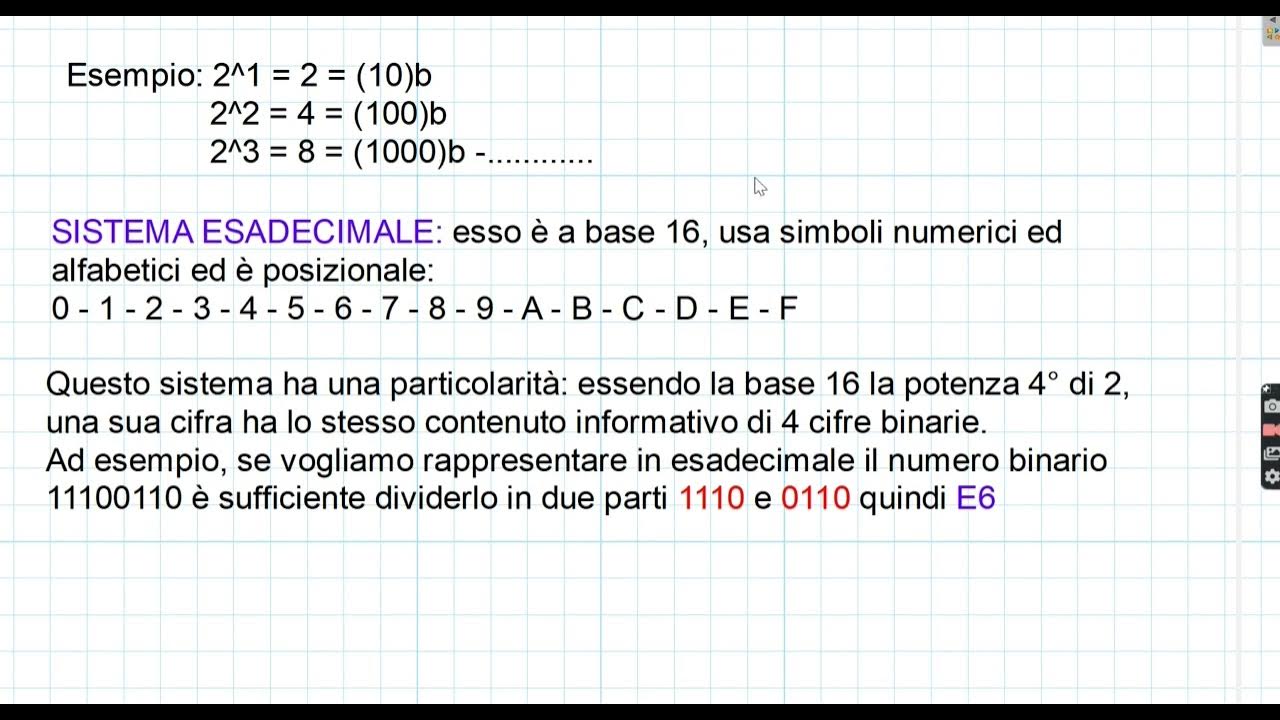#12 Python Tutorial for Beginners | Number System Conversion in Python
Summary
TLDRIn this Python tutorial, Naveen explores binary and other number systems, essential for programming. He explains the use of binary, octal, and hexadecimal systems in computing, such as in MAC addresses and IPv6. Naveen demonstrates how to convert numbers between decimal, binary, octal, and hexadecimal using Python's built-in functions and manual conversion methods. He emphasizes the importance of understanding these conversions for bitwise operations and provides practice assignments to solidify the concept.
Takeaways
- 😀 The video discusses different number systems used in programming, including binary, decimal, octal, and hexadecimal.
- 🔢 The binary system is fundamental in programming and is used for representing data in computers.
- 💡 The video explains how to convert numbers from the decimal system to binary, octal, and hexadecimal systems.
- 🛠️ The 'bin()' function in Python is introduced as a tool for converting decimal numbers to binary.
- 📝 The process of converting a decimal number to binary involves dividing the number by 2 and recording the remainders.
- 🔄 The video demonstrates how to read binary numbers in reverse order to get the correct decimal value.
- 📚 The 'oct()' and 'hex()' functions are highlighted for converting decimal numbers to octal and hexadecimal formats, respectively.
- 🔑 The '0b', '0o', and '0x' prefixes are used in Python to denote binary, octal, and hexadecimal literals.
- 👨🏫 The video provides practical examples and encourages viewers to practice converting numbers between systems on their own.
- 📈 Understanding number system conversions is crucial for grasping bitwise operators, which will be covered in subsequent videos.
- 🎓 The video concludes with homework assignments for the viewers to practice converting numbers between decimal, binary, octal, and hexadecimal systems.
Q & A
What are the different number systems discussed in the video?
-The video discusses the binary, decimal, octal, and hexadecimal number systems.
Why do we use different number systems in programming?
-Different number systems are used in programming to represent data efficiently and to work with specific types of data like MAC addresses (hexadecimal) and IPv6 addresses (accessible format).
How does the video demonstrate converting a number from decimal to binary?
-The video demonstrates converting a number from decimal to binary by using the 'bin' function in Python and by manually dividing the number by 2, recording the remainders, and reading them in reverse order.
What is the significance of the '0b' prefix in Python when representing binary numbers?
-The '0b' prefix in Python indicates that the number following it is in binary format, distinguishing it from decimal numbers.
How can you convert a binary number to a decimal number in Python?
-In Python, you can convert a binary number to a decimal by prefixing it with '0b' and then using it in a context where a decimal number is expected or using built-in functions to perform the conversion.
What is the base of the binary number system?
-The base of the binary number system is 2, which means it uses only two digits, 0 and 1.
How does the video explain the conversion of a decimal number to an octal number?
-The video explains the conversion of a decimal number to an octal number by using the 'oct' function in Python or by dividing the number by 8 and recording the remainders in reverse order.
What is the hexadecimal system's base and what characters are used beyond the decimal numbers?
-The hexadecimal system has a base of 16 and uses the characters A to F to represent values from 10 to 15.
How can you verify the correctness of a binary number conversion in Python?
-You can verify the correctness of a binary number conversion in Python by comparing the output of the 'bin' function with the manual calculation or by converting it back to decimal using the 'int' function with base 2.
What assignments does the video suggest for practice?
-The video suggests converting the numbers 31, 21, 52, and 65 from decimal to binary as practice assignments.
What is the process for converting a binary number to a decimal number as explained in the video?
-The process involves starting from the last digit of the binary number, using powers of 2, and summing up the values where the binary digit is 1.
Outlines

This section is available to paid users only. Please upgrade to access this part.
Upgrade NowMindmap

This section is available to paid users only. Please upgrade to access this part.
Upgrade NowKeywords

This section is available to paid users only. Please upgrade to access this part.
Upgrade NowHighlights

This section is available to paid users only. Please upgrade to access this part.
Upgrade NowTranscripts

This section is available to paid users only. Please upgrade to access this part.
Upgrade NowBrowse More Related Video

Teknologi Digital • Part 1: Pengertian Teknologi Digital, Sistem Bilangan, dan Kode Biner

77. OCR A Level (H046-H446) SLR13 - 1.4 Hexadecimal representation

ED2. Sistemi di Numerazione

3. CAMBRIDGE IGCSE (0478-0984) 1.1 Converting between number systems - Part 1

ELEKTRONIKA DIGITAL: SISTEM BILANGAN (Biner, Oktal, Desimal, Heksadesimal)

Tutorial Lengkap: Konversi Bilangan Biner, Oktal, Desimal, dan Heksadesimal
5.0 / 5 (0 votes)